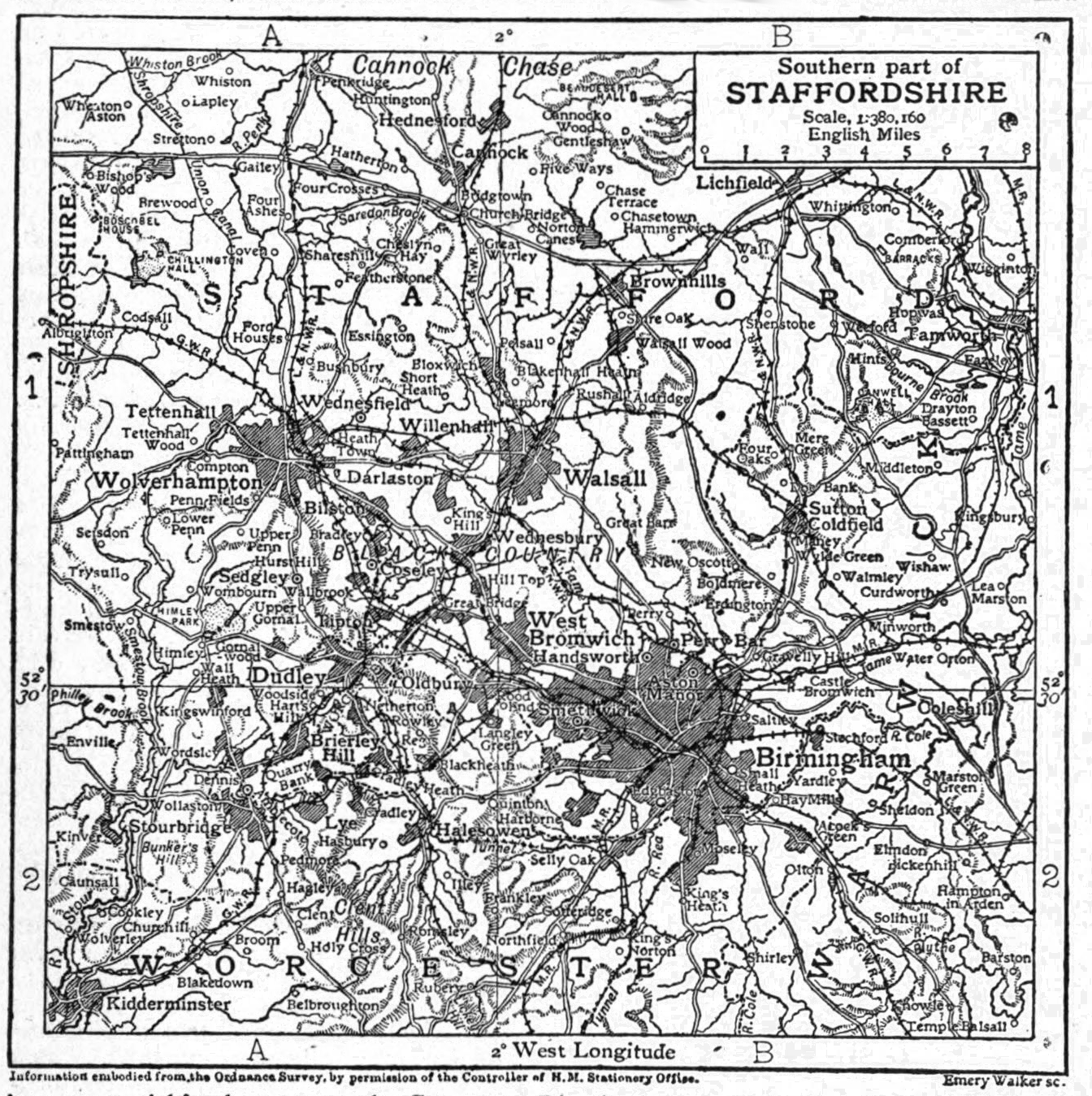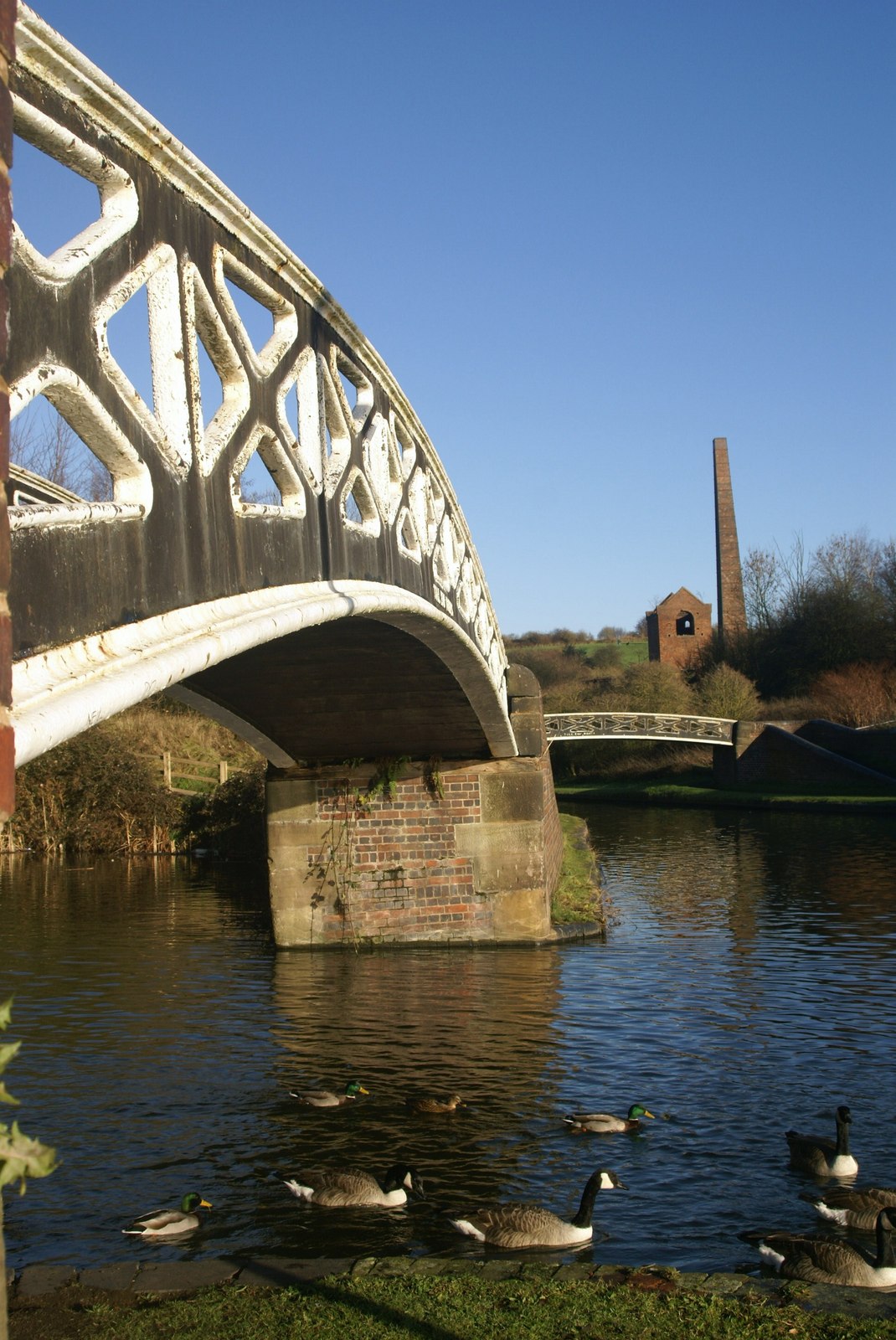|
Brockmoor Carters Yard
Brockmoor Carters Yard is a yard and stable at the Black Country Living Museum. It was originally located at Ogley Hay Road Burntwood, Cannock, having been built around 1900. It was dismantled and brought to the museum in the 1990s. History Horses were key for transport in the Black Country; they also pulled trams, coaches, milk floats, coal carts, canal boats and fire engines. Industry made the Black Country but horses kept it moving. Horses would have been stabled close to their trade in a yard. The Carters Yard at the Black Country Living Museum is a prime example. The Carters Yard contains a stable carefully dismantled and moved from Burntwood, Cannock. It stood in the backyard of a cottage in Ogley Hay Road and was probably built in 1900. The building was donated to the museum in the 1990s. The stable fittings were from a coach house and stable which was located in Handsworth Wood Road, Birmingham. With the advent of the motorcar and petrol engine lorries, horse transport d ... [...More Info...] [...Related Items...] OR: [Wikipedia] [Google] [Baidu] |
Black Country Living Museum
The Black Country Living Museum (formerly the Black Country Museum) is an open-air museum of rebuilt historic buildings in Dudley, West Midlands, England.Black Country Living Museum accessed 14 February 2011 It is located in the centre of the , 10 miles west of . The museum occupies of former industrial land partly reclaimed from a former railway goods yard, disused s, canal arm and former coal pits. The museum opened to the public in 1978, and has s ... [...More Info...] [...Related Items...] OR: [Wikipedia] [Google] [Baidu] |
Burntwood
Burntwood is a former mining town and civil parish in the Lichfield District in Staffordshire, England, approximately west of Lichfield and north east of Brownhills. The town had a population of 26,049 and forms part of Lichfield district. The town forms one of the largest urbanised parishes in England. Samuel Johnson opened an academy in nearby Edial in 1736. The town is home to the smallest park (opened to commemorate the marriage of the Prince of Wales in 1863) in the UK, Prince's Park, which is located next to Christ Church on the junction of Farewell Lane and Church Road. The town expanded in the nineteenth century around the coal mining industry. Areas of Burntwood are Boney Hay, Chase Terrace, Chasetown, Gorstey Lea and Burntwood Green. Nearby places are Brownhills, Cannock, Cannock Wood, Norton Canes, Gentleshaw, Pipehill, Muckley Corner, Hammerwich and Lichfield. In July 2009 a Burntwood man, Terry Herbert, discovered a hoard of Saxon treasure with a metal d ... [...More Info...] [...Related Items...] OR: [Wikipedia] [Google] [Baidu] |
Cannock
Cannock () is a town in the Cannock Chase district in the county of Staffordshire, England. It had a population of 29,018. Cannock is not far from the nearby towns of Walsall, Burntwood, Stafford and Telford. The cities of Lichfield and Wolverhampton are also nearby. Cannock lies to the north of the West Midlands conurbation on the M6, A34 and A5 roads, and to the south of The Chase, an Area of Outstanding Natural Beauty (AONB). Cannock is served by a railway station on the Chase Line. The town comprises four district council electoral wards and the Cannock South ward includes the civil parish of Bridgtown, but the rest of Cannock is unparished. History Cannock was in the Domesday Book of 1086. It was called Chnoc c.1130, Cnot in 1156, Canot in 1157, and Canoc in 1198. Cannock is probably Old English cnocc meaning 'hillock', modified by Norman pronunciation by the insertion of a vowel to Canoc. The name may refer to Shoal Hill, north-west of the town. Cannock was a small ... [...More Info...] [...Related Items...] OR: [Wikipedia] [Google] [Baidu] |
Black Country
The Black Country is an area of the West Midlands county, England covering most of the Metropolitan Boroughs of Dudley, Sandwell and Walsall. Dudley and Tipton are generally considered to be the centre. It became industrialised during its role as one of the birth places of the Industrial Revolution across the English Midlands with coal mines, coking, iron foundries, glass factories, brickworks and steel mills, producing a high level of air pollution. The name dates from the 1840s, and is believed to come from the soot that the heavy industries covered the area in, although the 30-foot-thick coal seam close to the surface is another possible origin. The road between Wolverhampton and Birmingham was described as "one continuous town" in 1785. Extent The Black Country has no single set of defined boundaries. Some traditionalists define it as "the area where the coal seam comes to the surface – so West Bromwich, Coseley, Oldbury, Blackheath, Cradley Heath, Old Hill, B ... [...More Info...] [...Related Items...] OR: [Wikipedia] [Google] [Baidu] |
Horse
The horse (''Equus ferus caballus'') is a domesticated, one-toed, hoofed mammal. It belongs to the taxonomic family Equidae and is one of two extant subspecies of ''Equus ferus''. The horse has evolved over the past 45 to 55 million years from a small multi-toed creature, ''Eohippus'', into the large, single-toed animal of today. Humans began domesticating horses around 4000 BCE, and their domestication is believed to have been widespread by 3000 BCE. Horses in the subspecies ''caballus'' are domesticated, although some domesticated populations live in the wild as feral horses. These feral populations are not true wild horses, as this term is used to describe horses that have never been domesticated. There is an extensive, specialized vocabulary used to describe equine-related concepts, covering everything from anatomy to life stages, size, colors, markings, breeds, locomotion, and behavior. Horses are adapted to run, allowing them to quickly escape predators, and po ... [...More Info...] [...Related Items...] OR: [Wikipedia] [Google] [Baidu] |
Birmingham
Birmingham ( ) is a city and metropolitan borough in the metropolitan county of West Midlands in England. It is the second-largest city in the United Kingdom with a population of 1.145 million in the city proper, 2.92 million in the West Midlands metropolitan county, and approximately 4.3 million in the wider metropolitan area. It is the largest UK metropolitan area outside of London. Birmingham is known as the second city of the United Kingdom. Located in the West Midlands region of England, approximately from London, Birmingham is considered to be the social, cultural, financial and commercial centre of the Midlands. Distinctively, Birmingham only has small rivers flowing through it, mainly the River Tame and its tributaries River Rea and River Cole – one of the closest main rivers is the Severn, approximately west of the city centre. Historically a market town in Warwickshire in the medieval period, Birmingham grew during the 18th century during the Midla ... [...More Info...] [...Related Items...] OR: [Wikipedia] [Google] [Baidu] |
Railway
Rail transport (also known as train transport) is a means of transport that transfers passengers and goods on wheeled vehicles running on rails, which are incorporated in tracks. In contrast to road transport, where the vehicles run on a prepared flat surface, rail vehicles (rolling stock) are directionally guided by the tracks on which they run. Tracks usually consist of steel rails, installed on sleepers (ties) set in ballast, on which the rolling stock, usually fitted with metal wheels, moves. Other variations are also possible, such as "slab track", in which the rails are fastened to a concrete foundation resting on a prepared subsurface. Rolling stock in a rail transport system generally encounters lower frictional resistance than rubber-tyred road vehicles, so passenger and freight cars (carriages and wagons) can be coupled into longer trains. The operation is carried out by a railway company, providing transport between train stations or freight customer facilit ... [...More Info...] [...Related Items...] OR: [Wikipedia] [Google] [Baidu] |
Willenhall
Willenhall is a market town situated in the Metropolitan Borough of Walsall, in the West Midlands, England, with a population taken at the 2011 census of 28,480. It is situated between Wolverhampton and Walsall, historically in the county of Staffordshire. It lies upon the River Tame, and is part of the Black Country. The town is historically famous for the manufacture of locks and keys. As early as 1770 Willenhall contained 148 skilled locksmiths and its coat of arms reflects the importance of this industry to its growth. It was home to the National Union of Lock and Metal Workers from 1889 until 2004. Its motto is '' Salus Populi Suprema Lex'' – The welfare of the people is the highest law. The urban district of Willenhall (established by the Local Government Act 1894) was partitioned in 1966 between the county boroughs of Walsall and Wolverhampton (since 1974 the metropolitan boroughs of Walsall and Wolverhampton). The northern border of Willenhall has always been adj ... [...More Info...] [...Related Items...] OR: [Wikipedia] [Google] [Baidu] |
Netherton, West Midlands
Netherton is an area of the Metropolitan Borough of Dudley, south of Dudley town centre in the West Midlands of England, but historically in Worcestershire. Part of the Black Country, Netherton is bounded by nature reserves to the east and west, and an industrial area and the Dudley Southern By-Pass to the north. History Early history Netherton means "lower farm" in Old English (the corresponding upper farm may have been Dudley itself). For most of its history, Netherton was a small village centred around the point where a brook crossed the Baptist End Road, near the boundary of Pensnett Chase, a partially wooded common. Netherton is mentioned in legal records dating from 1420 and the first mention of a Netherton nailor, an occupation that became very important locally in later years, is dated 1559. The village is called 'Nederton' in the earliest available documents. The village was included in the Manor of Dudley, a Lordship of the Barons of Dudley who once owned a manor house ... [...More Info...] [...Related Items...] OR: [Wikipedia] [Google] [Baidu] |
Shire Horse
The Shire is a British breed of draught horse. It is usually black, bay, or grey. It is a tall breed, and Shires have at various times held world records both for the largest horse and for the tallest horse. The Shire has a great capacity for weight-pulling; it was used for farm work, to tow barges at a time when the canal system was the principal means of goods transport, and as a cart-horse for road transport. One traditional use was for pulling brewer's drays for delivery of beer, and some are still used in this way; others are used for forestry, for riding and for commercial promotion. The Shire breed was established in the mid-eighteenth century, although its origins are much older. A breed society was formed in 1876, and in 1878 the first stud-book was published. In the late nineteenth and early twentieth centuries, there were large numbers of Shires, and many were exported to the United States. With the progressive mechanisation of agriculture and of transport, the ... [...More Info...] [...Related Items...] OR: [Wikipedia] [Google] [Baidu] |







